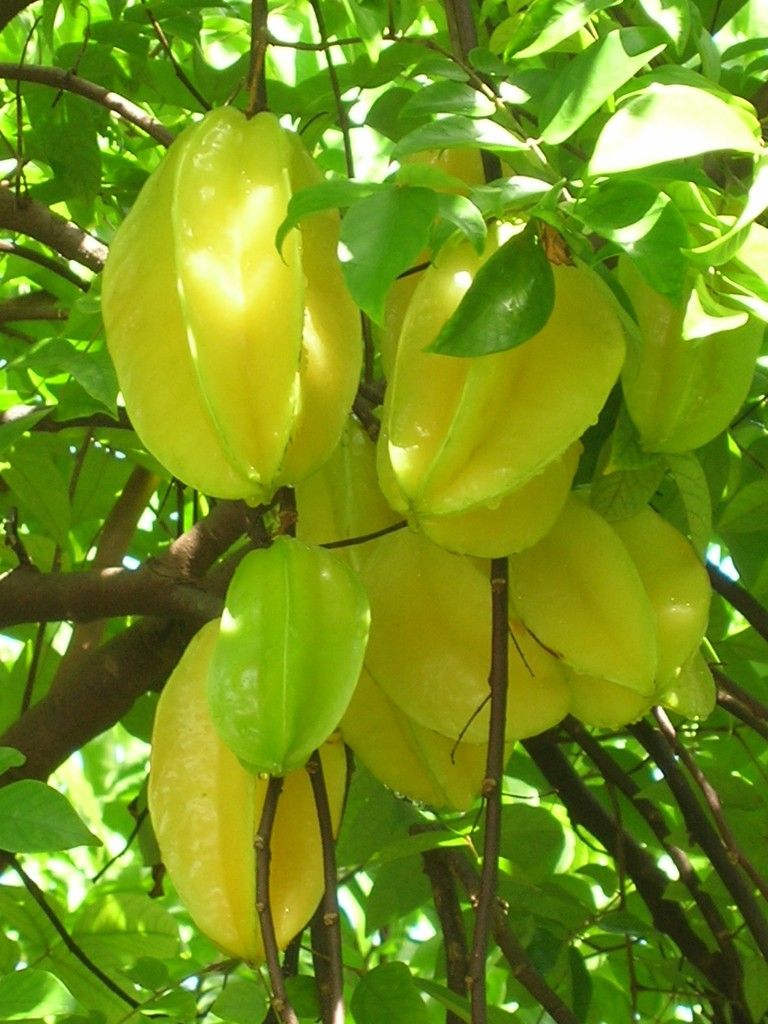
Carambola
Averrhoa carambola
Basic Information
🌿 Family: Oxalidaceae🗺️ Zone: 10-12
Other Names:
- Star Fruit
- Balimbing
- Five-corner
🌡️ Ideal Temperature : 68°F – 95°F
🔥 Heat Tolerance: Up to 100°F
❄️ Cold Tolerance: Down to 32°F
🌱 Type: Perennial
Layers
- Sub-Canopy
Functions
- Edible
- Medicinal
- Wildlife Attractor
- Ornamental
Pests
No pests associated with this plant.
Description
Carambola, commonly known as star fruit, is a tropical evergreen tree native to Southeast Asia. It typically reaches heights of 6–9 meters (20–30 feet) with a bushy, rounded canopy. The tree produces distinctive, star-shaped fruits when sliced crosswise, measuring 5–15 centimeters (2–6 inches) in length. The fruit's skin is thin, waxy, and turns from green to yellow upon ripening, while the flesh is juicy, crisp, and ranges from sweet to tangy in flavor.
🌞💧 Sun and Water Requirements:
- Prefers full sun exposure for optimal fruit production.
- Thrives in well-drained, loamy soils with a pH between 5.5 and 6.5.
- Requires consistent moisture; regular watering is essential, especially during dry periods.
✂️🫘 Methods to Propagate:
- Seeds: Fresh seeds can be sown but may not produce true-to-type fruit.
- Grafting: Commonly used to propagate desired cultivars and ensure fruit quality.
- Air Layering: Effective for producing clones of the parent tree.
🧑🌾👩🌾 When to Harvest:
- Fruits are ready for harvest when they turn uniformly yellow.
- Typically, harvesting occurs 60–75 days after fruit set.
- Handle fruits carefully to avoid bruising; they can be stored in the refrigerator for up to two weeks.
Purpose
Carambola serves multiple functions in permaculture systems:
- Edible: Produces nutrient-rich fruits consumed fresh, juiced, or used in culinary dishes.
- Medicinal: Traditionally used in some cultures for its antimicrobial and antioxidant properties.
- Wildlife Attractor: Flowers attract pollinators like bees, while fruits provide food for birds and other wildlife.
- Ornamental: The tree's attractive foliage and unique fruit make it a popular choice for landscape aesthetics.